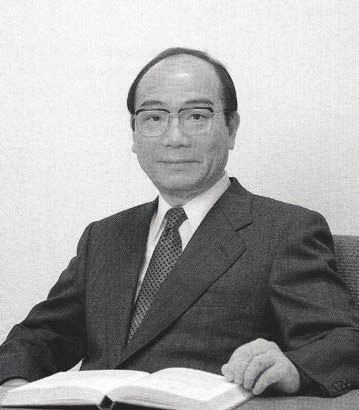
Physiology News Magazine
Obituary: Syogoro Nishi
1929 – 2014
Membership
Obituary: Syogoro Nishi
1929 – 2014
Membership
R Alan North & Alexander Karczmar
https://doi.org/10.36866/pn.96.46

Syogoro Nishi was born on 22 March 1929 in Fukuoka, Japan. He died there on 13 February 2014. After graduating from Kurume University Medical School, Nishi undertook a PhD in physiology, before accepting a Fulbright Scholarship to the United States. There he joined his senior colleague from Kurume, Kyozo Koketsu, who had learned the intracellular microelectrode technique from Ralph Gerard in Chicago. Their first target with these glass electrodes was the small intrafusal muscle fibres, innervated by g-motoneurons and setting the tone of the stretch receptors.
After three initial years in the United States, Nishi returned to the Physiology Department at Kurume. Then from 1966 to 1975 he directed the Neurophysiology Laboratory, Department of Pharmacology and Therapeutics, of Loyola University’s Stritch School of Medicine in Maywood, Illinois. In the late 1950s, the Koketsu and Nishi partnership made the first detailed intracellular recordings from sympathetic ganglia and from primary afferent neurons of the spinal ganglia in frogs: over the next decade or so they elucidated the role of calcium ions in the action potential, deduced the repertoire of ionic conductance present in the cells, and determined the ionic mechanisms of the synaptic inputs. Nishi particularly contributed to our understanding of the mechanisms underlying the slower synaptic potentials (slow EPSP, slow IPSP, late slow EPSP) resulting from repetitive stimulation of the preganglionic nerves. He demonstrated that noradrenaline inhibited the fast EPSP by directly inhibiting the release of acetylcholine (with Christ and Dun). He pioneered the methods for recording from the tiny ganglia of the enteric nervous system, distinguishing between the admixed efferent and afferent neurons of the myenteric plexus (with North). He showed that g-aminobutyric acid depolarized primary afferent neurons, and by inference their terminals in the spinal cord, by increasing the membrane chloride conductance (with Gallagher and Karczmar). Throughout this period, his reputation developed for technical mastery, and for publications of unusual completeness and authority.
His career continued in Kurume from 1975, and he served in due course as Head of Physiology, and Dean of the Medical School. He strengthened his contributions to our understanding of enteric ganglia and afferent neurons (with Higashi, Katayama and Mihara) but also adopted the brain slice methodology to bring similar approaches to the central nervous system. He described the fundamental properties of neurons in particular nuclei, and their synaptic inputs (dorsal raphe, nucleus accumbens, anterior cingulate cortex, central amygdala and hippocampus, with Tanaka, Higashi, Uchimura and Inokuchi). However, his major impact during this period remained the autonomic nervous system. With Yoshimura and Polosa, he determined the membrane properties of preganglionic sympathetic neurons in the spinal cord, showing how an unusually long afterhyperpolarization determined the discharge patterns of these neurons.
This work was recognised by election to Honorary Membership of The Physiological Society in 1999, and by an award by the Emperor of Japan in 2008 for his services to science and education, of the ‘Order of the Sacred Treasure, Gold Rays with Neck Ribbon’.
Syogoro Nishi asked scientific questions that required not only remarkable technical skill but also unusual calm perseverance. The beautiful results very often arrived late at night. He was well suited by temperament to this approach, for his prowess was matched by his humility. The world is richer not only because we know more about autonomic neurons, but because many of us have been touched and inspired by the company of a man who seemed to bring his personal kindness into the laboratory with him.
